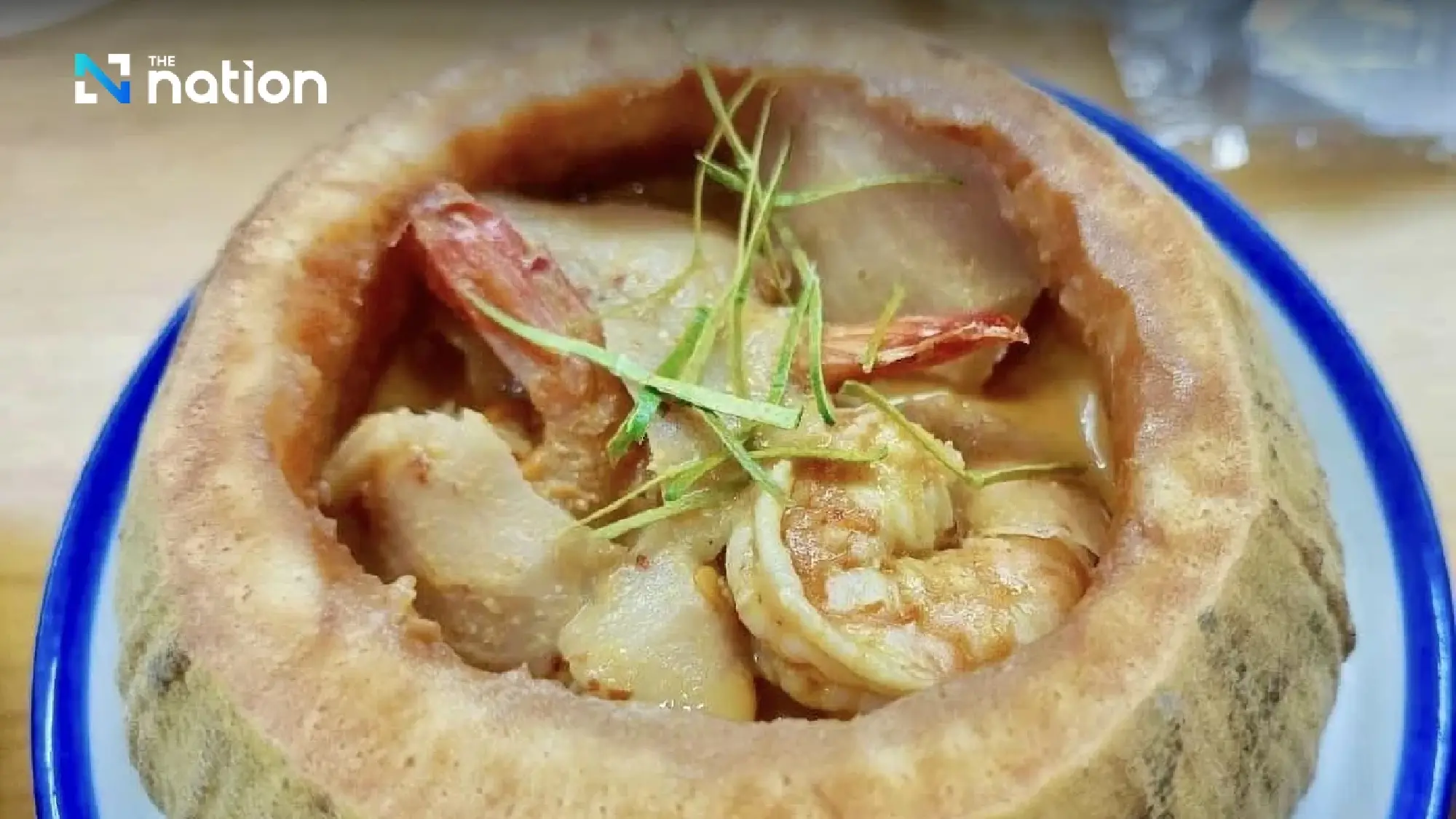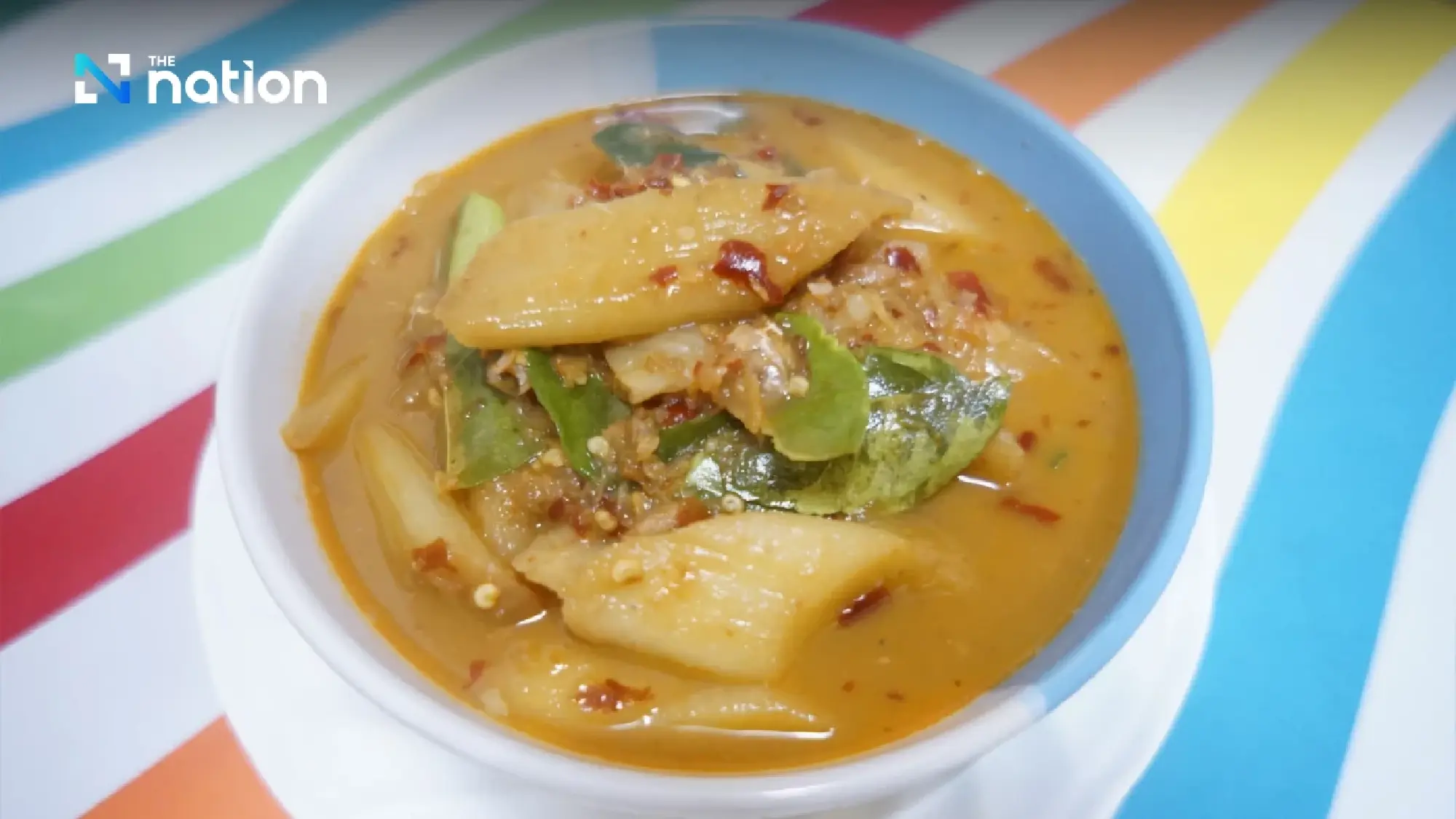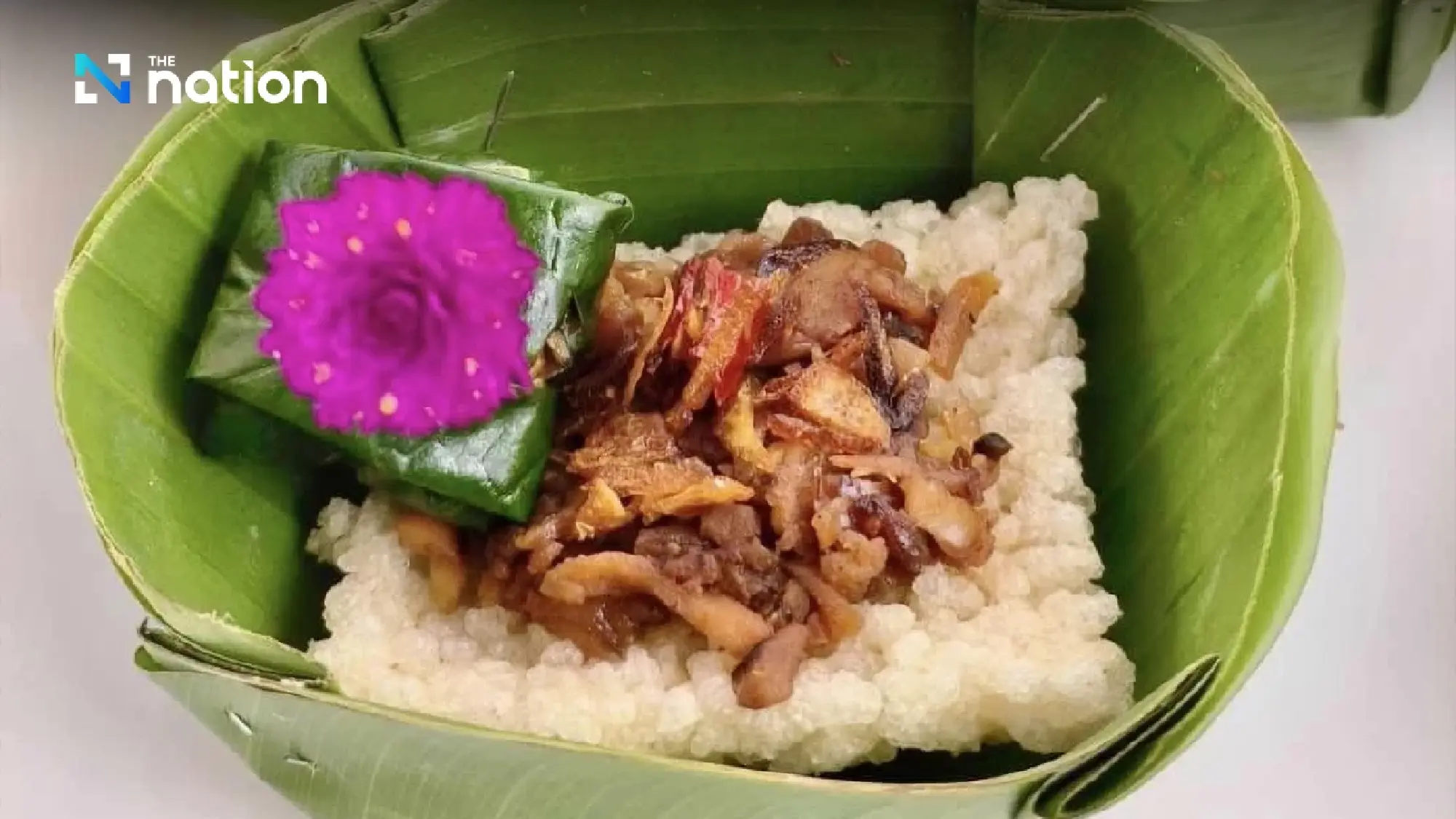September 24, 2024
BANGKOK – Let us introduce you to the five local cuisines of Nonthaburi province, following the Ministry of Culture’s documentation of disappearing flavours for 2024 under the theme “The Lost Taste”.
The Department of Cultural Promotion has compiled information on local cuisine under the 2024 fiscal year’s “The Lost Taste” project. The key focus is on preserving and collecting local dishes rich in cultural wisdom and unique flavours.
This initiative aims to connect Thai society to the value of traditional foods that form the roots of the Thai community. It also includes the preparation methods, history of each dish, and the cultural aspects associated with them.
Nonthaburi, one of the provinces in the Greater Bangkok area, is renowned for its fertile land and famous fruit orchards dating back to ancient times. The five traditional dishes on “The Lost Taste” list are:

Kaeng Kua Krathon Bang Krang (Bang Krang Santol Curry)
Kaeng Kua Krathon Bang Krang (Bang Krang Santol Curry)
Kaeng kua krathon bang krang reflects the traditional way of life in Nonthaburi, as the ingredients used in this dish are sourced from the durian orchards of the province, particularly its famous santol fruit.
The durian orchards in Nonthaburi are cultivated by farmers through a mixed-farming method, planting various crops to protect against pests and animals that could impact high-value produce, such as durian and mangosteen.

Kaeng Bon Nam Non (Nam Non Elephant Ear Curry)
Kaeng Bon Nam Non (Nam Non Elephant Ear Curry)
Elephant-ear curry, according to Wanida Rangappai, 78, the holder of the original Nam Non Elephant Ear Curry recipe, is a dish made using elephant-ear plants that grow naturally in durian orchards.
“When clearing weeds, we don’t throw away the elephant-ear plants; they grow and we can harvest them to eat,” Grandmother Wanida explained. “The sludge in the orchard’s ditches, enriched by fallen Indian coral tree leaves, has decomposed over time, creating a nutrient-rich environment that serves as fertiliser for both the durian trees and weeds like the elephant-ear plant.”
She shared that when harvesting elephant-ear plants, gloves must be worn to prevent itching. “We cut the stalks, peel them, slice them, and wash them. Then we bring water to a boil, simmer the elephant ear for about half an hour until tender, and discard the water. Once it’s ready, it can be used for cooking.”
The secret to reducing the itchiness of elephant-ear plants, according to Grandmother Wanida, is to do everything using hot water. “Boil the elephant ear in boiling water, cook it in boiling curry, and even use boiled water to mix the tamarind sauce .”

Kaeng Matat (Elephant Apple Curry)
Kaeng Matat (Elephant Apple Curry)
The elephant apple is a fruit used by the Mon people to make kaeng matad curry during the Buddhist Lent every year. It bears fruit once a year during the festival and offers several health benefits, including treating stomach ailments and balancing hormones in menopause. Elephant apple has a sour taste, and its clear sap possesses medicinal properties, making it a valuable health food.

Khao Tang Miang Krathon (Rice Crackers Miang with Santol )
Khao Tang Miang Krathon (Rice Crackers Miang with Santol )
In the past, santol was a seasonal fruit abundant in Nonthaburi province. If the fruit was wrapped while still maturing, it would grow larger and have delicious flesh. People enjoyed eating the inner flesh attached to the fluffy pulp, either fresh, in prepared dishes, or in syrup.
As for the smaller, unwrapped santol or those that fell prematurely, it seemed a waste to discard them. Since the flesh near the skin has an astringent taste, people would repurpose it by making curries or stir-fries.
However, the problem was that it couldn’t be stored for long, leading to the idea of stir-frying the santol until dry, which could then be enjoyed as miang (a bite-sized wrap) paired with crispy rice crackers.

Tod Man Nor Kala Nam Jim Krathon (Nor Kala Fish Cakes with Santol Dipping Sauce)
Tod Man Nor Kala Nam Jim Krathon (Nor Kala Fish Cakes with Santol Dipping Sauce)
Nor kala (Alpinia nigra Burrt) is considered a local plant of the Koh Kret community in Nonthaburi province. This area is home to Thai people of Mon descent, who commonly consume nor kala as a fresh vegetable, boiled and dipped in chilli paste. It is also popularly used in a signature dish of Koh Kret, Tod Man Nor kala.


